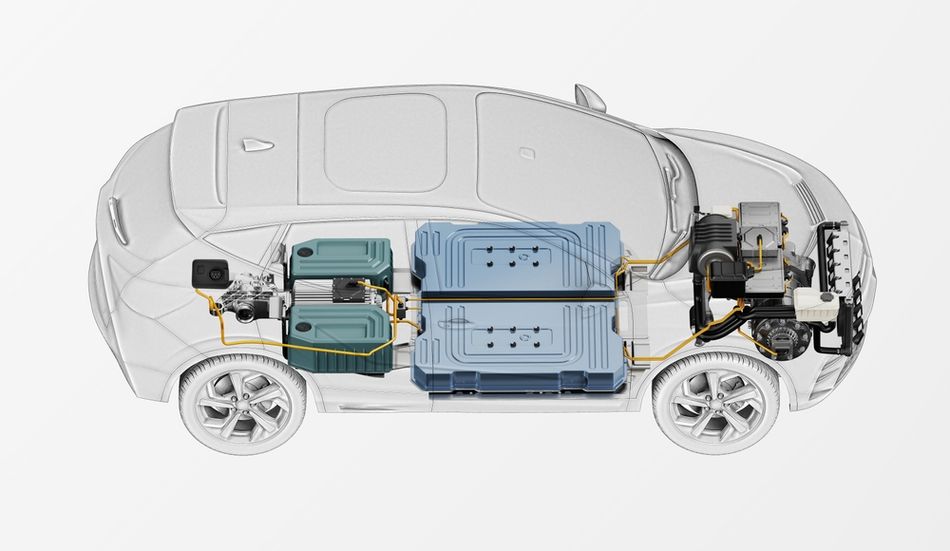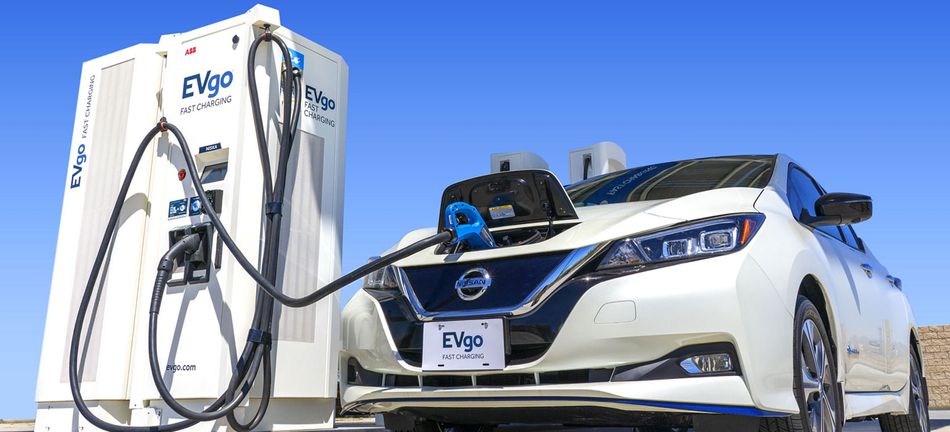The State of Electric Vehicles in 2023: Trends in the Development and Adoption of Electric Vehicles
Article #5 of Innovations in Electric and Autonomous Vehicles Series: EV batteries and chargers evolve, and as traditional auto sales dropped, EV sales continued to rise over the past years. What will this mean for investors and consumers? Where is the tech taking us and what stands in the way?
This is the fifth article in an 8-part series featuring articles on Innovations in Electric and Autonomous Vehicles. The series presents an insight into the developments and challenges in the automotive sector as it undergoes massive transformations with the arrival of electric and self-driving vehicles. This series is sponsored by Mouser Electronics. Through the sponsorship, Mouser Electronics shares its passion for technologies that enable smarter and connected applications.
Electric vehicles are supposed to be the wave of the future—but is the future already here? Even though overall automobile sales were down in the last three years due to the pandemic and the ensuing chip shortage, EV sales are rising. One hundred twenty billion dollars was spent globally on EVs in 2020[1], more than double what was spent in 2019, and over 6 million battery electric vehicles (BEVs) and plug-in hybrid EVs (PHEVs) were sold in 2021 worldwide, nearly twice as many as the previous year.[2] In a depressed automotive market overall, China more than doubled its EV sales of the prior year. Environmental protection, consumer demand, and governmental regulations spur the proliferation of EVs.
Some forecasts predict that global EV sales might increase by a factor of 10 in the next decade alone.[1] Almost every major EV manufacturer has announced plans to ramp up production in the coming months and years. EVs' biggest remaining questions are simple: How long before sales overtake standard internal combustion engine (ICE) vehicle sales, and what factors are supporting—or working against—that transition?
This article will examine some of the ways EV technology will evolve soon, and some of the obstacles EV tech needs to overcome before the automotive industry can complete the transition to fully electric.
Batteries/Smart Charging
Lithium-ion batteries have been the standard in EVs since 2015, but the technology is constantly evolving. Some EV developers are experimenting with the internal chemistry of EV batteries to decrease their reliance on some of the rare materials that lithium batteries rely on, like nickel and cobalt. Lithium ferro-phosphate batteries have exhibited significant potential and are being touted by some of the largest EV manufacturers as the next iteration of EV battery tech.
Batteries that combine lithium and sodium are also in development to deliver reliable performance in cold temperatures that negatively affect lithium battery packs. Solid-state batteries are being developed for improved stability, although insufficient energy density is still a hurdle for solid electrolyte tech. The next article from this series shall cover this topic in depth.
Carbon-based batteries are in development as well, but they are still in the early stages and haven't been scaled up from small vehicles and E-bikes to meet the needs of an EV yet. While most current EV battery packs are encased in aluminum due to their light weight and malleability, some manufacturers are experimenting with enclosures made from composite materials to reduce weight and improve overall safety (damaged lithium batteries have been documented to catch fire in certain EV models).
As EVs proliferate, the capacity to charge them must grow to meet the demand. While EVs currently make up just a little less than 1% of the automobiles in the world, what happens when that number climbs into the double digits? Can our electrical grids support such an enormous drain on their resources? Smart charging stations can help mitigate that drain by varying their charging load according to the time of day.
Smart charging stations can be hard to find outside of major metropolitan areas. Still, they provide the capability to move car charging to off-peak hours through either user-managed charging (UMC) or supplier-managed charging (SMC). SMC charging determines when to charge the battery based on several factors, including local energy consumption and the relative strain being put on the grid. When the drain on the grid is low (e.g., overnight), SMC chargers increase the charging load and then decrease it again in the morning.
In the case of UMC, the charger will charge the battery based on relative energy pricing at the time through a time-of-use tariff. If they so choose, the user can pay more to charge their EV during peak hours rather than waiting until the off-peak. SMC charging will also factor in energy pricing and the SoC of other EVs charging on the same grid to distribute energy optimally. Some estimates project the EV charging market to exceed $200 billion by 2030.[3]
Barriers to Electric Vehicle Adoption
Despite robust EV sales and projections, there are still significant impediments to globally transitioning from gasoline to electricity. Battery charging times are still a significant factor in EV proliferation; it can take up to eight hours to charge a 60 kWh battery using a Level 2 (240 volt) charging station, the type of charger most commonly found in private homes. DC fast-charging stations can deliver about 80% state of charge (SoC) in 30–45 minutes, but they can be hard to find, and most people probably won’t be able to have one installed in their home due to cost or municipal regulations. In more expansive, less developed areas, much more charging infrastructure will need to be in place before EVs compete with gasoline-powered automobiles. If EVs are going to outnumber ICE automobiles on the roads, battery charging time and convenience may be the most significant determining factor.
The ongoing evolution of battery pack technology is indicative of another significant obstacle; the availability of the raw materials EV batteries are made from. Cobalt, in particular, is in short supply worldwide. If EVs sales meet high expectations in the next decade, EV battery packs will likely need to transition away from technology that requires such rare materials.
Batteries and improved battery technology won’t just be a key factor in EV sales alone; many approaches to building out the required infrastructure for energy distribution to support significantly more EVs on the road also require many electrical energy storage stations. Like gas stations, the electrical versions will have large banks of batteries that store energy for use in a building complex, in parking lots, in neighborhoods, and near shopping or dining locations. These facilities won't be tied to the traditional energy grid when coupled with solar power collectors. They could be deployed as modular, self-sufficient facilities, perhaps replacing many existing gas stations with electrical facilities.
Such a massive build-out of new battery technology would have different requirements than EV batteries. Properties such as weight, charging time, and energy density probably won’t be as important—cost, reliability, and battery lifetime will be more essential factors. Using the same critical materials that EV batteries require could be a significant barrier to building the necessary infrastructure. Alternatives to the critical EV materials, such as nickel and cobalt, will have to work in these less restrictive requirements. This would overcome this key barrier. Perhaps carbon-based batteries coupled with improved solar efficiency will overcome an obstacle to broader EV deployment and help build out the infrastructure necessary to make solar power more useful around the clock.
Investment and Incentives
Local, state, and federal governments worldwide have created a variety of regulations and incentives to accelerate EV adoption. One of the most popular forms of incentives is through a tax credit: Consumers that purchase an EV are eligible for a variable credit (usually four figures) against their taxes that fiscal year. The size of the credit varies by location, but EV tax credits are already in place in parts of the U.S., Europe, and Asia, though some expired at the end of 2020.
In China, EVs aren't subject to the same kind of pollution-based driving restrictions as fossil-fuel-powered automobiles; unlike ICE cars, zero-emission vehicles (ZEVs) can be driven at any time. Some European countries have made EVs exempt from local import and value-added taxes, giving EVs access to special bus and carpool/commuter lanes and giving discounts on public parking and ferry trips. Factoring in these incentives, the cost of owning an EV in certain European countries can be equal to the cost of owning a similar-sized ICE vehicle.
New Zealand uses a combination of a rebate on the purchase of an EV and fees on carbon emissions, nicknamed "the feebate," to incentivize its citizens to buy electric.[4] The rising price of gasoline could further provide incentive for car buyers to go electric.
There have also been legislative efforts worldwide to increase investment in charging infrastructure. The United Kingdom passed a law in 2019 mandating that all petrol stations have a smart charging station by 2025. In the U.S., lawmakers passed a $7.5 billion charging infrastructure bill designed to close some of the more significant geographic gaps in charging capability across the country, making long road trips in EVs more feasible.[5] In several countries, laws have also been passed requiring all new commercial and office building construction developments to include charging stations.
Conclusion
Although it’s hard to say for sure, some estimates put the total number of EVs (both BEVs and PHEVs) currently on the road worldwide at between 3 million and 4 million. The International Energy Agency (IEA) expects that number to balloon to as much as 125 million by 2030, mainly due to more EV-friendly policies and regulatory environments around the globe.[6] In China and Europe, credits and subsidies, restrictive emissions standards, and fossil-fuel taxes are expected to make EVs approximately 25% of all automobiles sold in those markets by 2030.
EV batteries will need to charge more quickly and less frequently for these expectations to become a reality and charging infrastructure will have to be further developed. EV manufacturers will have to be aware of the benefits and drawbacks of different EV types relative to geography—BEVs sell better in denser, more urban environments where charging stations are easier to find. At the same time, PHEVs are more prevalent in more rural, less populated locations.
Distinguishing between the different needs of BEV and PHEV buyers will mean tailoring EV battery technology to specific requirements, i.e., sacrificing size and weight for greater energy density and longer battery life in PHEVs. Although EV battery technology is currently relatively homogenous across the spectrum of models and manufacturers, the future will be more diffuse. Different battery and charging tech forms will be required for different environments, and competition between developers to deliver faster charging times and longer battery life will mean good things for the consumer.
This article is based on an e-book by Mouser Electronics. It has been substantially edited by the Wevolver team and Electrical Engineer Ravi Y Rao. It's the fifth article from the Innovations in Electric and Autonomous Vehicles Series. Future articles will introduce readers to some more trends and technologies transforming the automotive sector.
The introductory article presented the different topics covered in the Innovations in Electric and Autonomous Vehicles Series.
The first article discussed the present state of autonomous vehicles.
The second article explains MaaS and how improvements in automotive technologies are speeding up its adoption.
The third article takes a look at how the 3GPP intends to use 5G in V2X applications with significant advantages over current dedicated short-range communication or other Cellular-V2X proposals.
The fourth article explains Driver Monitoring Systems (DMS) and their role in reducing the possibility of mishaps due to human errors
The fifth article examines some of the ways EV technologies will evolve, and some of the obstacles they need to overcome before the automotive industry can transition to fully electric
The sixth article discusses solid-state batteries, a promising alternative to conventional Li-ion batteries
The seventh article explains active noise cancellation and why it’s a very effective solution for eliminating noises in automobiles
The final article focuses on Human Machine Interfaces, the sleek and stylish dashboards that are changing the way we interact with cars
About the sponsor: Mouser Electronics
Mouser Electronics is a worldwide leading authorized distributor of semiconductors and electronic components for over 1,200 manufacturer brands. They specialize in the rapid introduction of new products and technologies for design engineers and buyers. Their extensive product offering includes semiconductors, interconnects, passives, and electromechanical components.
References
[1] Global EV Outlook 2021, International Energy Agency, April 2021, [Online], Available from: https://www.iea.org/reports/global-ev-outlook-2021
[2] Global electric car sales have continued their strong growth in 2022 after breaking records last year, International Energy Agency, 23rd May 2020, [Online], Available from: https://www.iea.org/news/global-electric-car-sales-have-continued-their-strong-growth-in-2022-after-breaking-records-last-year
[3] Electric Vehicle Charging Infrastructure Market Size, Share & Trends Analysis Report By Charger Type, By Connector, By Application, By Region, And Segment Forecasts, 2022 - 2030, Grand View Research [Online], Available from: https://www.grandviewresearch.com/industry-analysis/electric-vehicle-charger-and-charging-station-market
[4] NZ Herald, 'Feebate' - The Government's Reverse Robin Hood Scheme, The New Zealand Initiative, 27th Sep. 2021, [Online], Available from: https://www.nzinitiative.org.nz/reports-and-media/opinion/feebate/
[5] Briefing Room, FACT SHEET: Biden-Harris Administration Proposes New Standards for National Electric Vehicle Charging Network, The White House, [Online], Available from: https://www.whitehouse.gov/briefing-room/statements-releases/2022/06/09/fact-sheet-biden-harris-administration-proposes-new-standards-for-national-electric-vehicle-charging-network/
[6] Tom DiChristopher, ‘Electric vehicles will grow from 3 million to 125 million by 2030, International Energy Agency forecasts’, CNBC, 30th May 2018, [Online], Available from: https://www.cnbc.com/2018/05/30/electric-vehicles-will-grow-from-3-million-to-125-million-by-2030-iea.html




